Explore Phang Nga - Thailand Travel, Asia
Nestled in southern Thailand, Phang Nga is a hidden gem of Thailand that offers a captivating blend of natural beauty and cultural richness. The region’s pristine landscapes, including the famous Phang Nga Bay with its towering karst formations, make it a must-visit destination. With its clear turquoise waters, lush jungles, and charming villages, Phang Nga invites visitors to explore its diverse attractions. Whether you're an adventure seeker, a nature lover, or someone looking to immerse yourself in local culture, Phang Nga promises a memorable experience, from exploring hidden caves to indulging in local cuisine.
Population: Approximately 270,000 in 2018.
Economy: Phang Nga's economy is driven by tourism, agriculture, and fishing. It thrives on attracting visitors to its natural attractions, while also benefiting from local farming and seafood industries.
Landmarks: Famous for the Phang Nga Bay, Similan Islands, and Koh Yao Islands.
Thailand
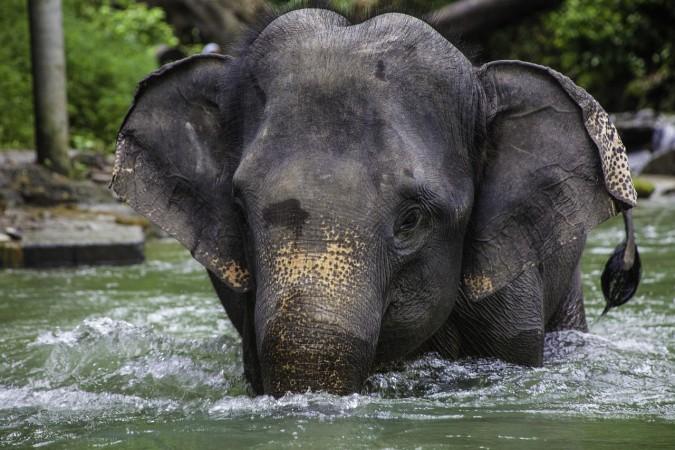
Overview of Phang Nga
History & Cultural Influence
Phang Nga’s history is as rich and varied as its landscapes. Originally settled by sea gypsies and fishing communities, the area has seen influences from various cultures over the centuries. One of the most significant historical sites in Phang Nga is the Wat Tham Suwan Khuha, a Buddhist temple located in a cave. This site, also known as the “Cave Temple,” is a testament to the region’s spiritual heritage and provides a glimpse into traditional Thai Buddhist practices. Furthermore, Phang Nga’s cultural tapestry is deeply enriched by its local festivals and traditions, which reflect a blend of indigenous beliefs and external influences.
Interaction with the Locals
Phang Nga, a province in southern Thailand, has a population of approximately 270,000 residents. The local population includes a mix of ethnic Thais and minority groups, such as the Sea Gypsies (Chao Leh) and Chinese-Thais. The citizens of Phang Nga are known for their hospitality and traditional lifestyles, which are deeply rooted in the region's cultural heritage. The local economy is driven by tourism, fishing, and agriculture, contributing to a vibrant community that welcomes visitors with warmth and friendliness.
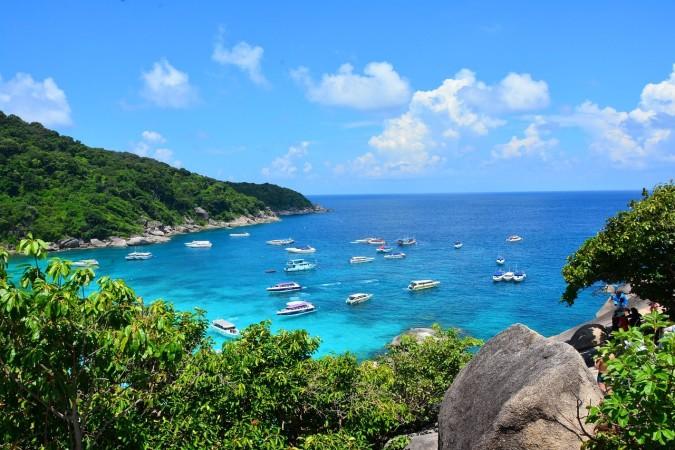
Phang Nga's natural beauty - © Vickiiz2326
Top Attractions in Phang Nga
Phang Nga Bay
Renowned for its stunning seascape, Phang Nga Bay is a must-visit destination. The bay is characterized by its dramatic limestone karsts, which rise majestically from the emerald waters. A boat tour through the bay reveals hidden lagoons and caves, including the famous James Bond Island, made famous by the movie “The Man with the Golden Gun.” Kayaking through the bay’s tranquil waters allows you to explore the bay’s natural beauty up close and appreciate its unique geological formations.
Similan Islands
Located in the Andaman Sea, the Similan Islands are celebrated as one of Thailand's premier dive sites. The islands are part of a protected national park and are well-known for their crystal-clear seas and varied marine life. Scuba divers and snorkelers can encounter vibrant coral reefs, schools of colorful fish, and even manta rays and whale sharks. The underwater landscape is as stunning as the islands themselves, making it a paradise for those seeking an unforgettable diving experience.
Koh Yao Islands
The Koh Yao Islands, which include Koh Yao Noi and Koh Yao Yai, provide a tranquil escape from the noise and bustle of more popular regions. These islands are perfect for those seeking tranquility and a glimpse into traditional Thai island life. Enjoy serene beaches with powdery white sand, explore lush jungle trails, and visit local villages where you can experience authentic island culture. The islands are also known for their beautiful sunsets and relaxed atmosphere, making them an ideal destination for a serene getaway.
Phang Nga Elephant Park
For a wonderful and ethical animal encounter, the Phang Nga Elephant Park is a fantastic choice. The park focuses on providing humane and responsible interactions with elephants. Visitors can learn about these majestic creatures through educational programs, observe their natural behaviors, and participate in feeding and bathing sessions. The park’s commitment to elephant welfare ensures a meaningful and enriching experience while promoting the conservation of these incredible animals.

Phang Nga Bay - © qimono
Must-Try Dishes in Phang Nga
Phang Nga’s culinary heritage is a delightful exploration of Thai flavors, offering a range of must-try local dishes that reflect the region's rich cultural influences.
- Massaman Curry: This rich and aromatic curry is a staple in Phang Nga, featuring tender chunks of meat cooked in a sauce of coconut milk, tamarind, and a blend of spices including cardamom and cinnamon. The result is a harmonious balance of sweet, savory, and mildly spicy flavors.
- Pad Thai: Pad Thai in Phang Nga is a famous Thai street food prepared with stir-fried rice noodles, shrimp or chicken, eggs, and a sour tamarind sauce. Garnished with peanuts, lime, and fresh herbs, it offers a satisfying mix of textures and tastes.
- Som Tum: This spicy green papaya salad is both refreshing and flavorful. It combines shredded green papaya with tomatoes, chilies, peanuts, and a tangy lime dressing. The result is a vibrant and crunchy salad that balances heat with refreshing citrus notes.
- Khao Mok Gai: Often referred to as Thai biryani, Khao Mok Gai features fragrant yellow rice cooked with chicken and a blend of spices including turmeric. It is usually served with a side of cucumber salad and a tangy dipping sauce.
- Tom Yum Goong: This iconic Thai soup is known for its bold flavors of lemongrass, kaffir lime leaves, and galangal. The soup typically includes shrimp, mushrooms, and a splash of lime juice, making it a spicy and tangy treat.
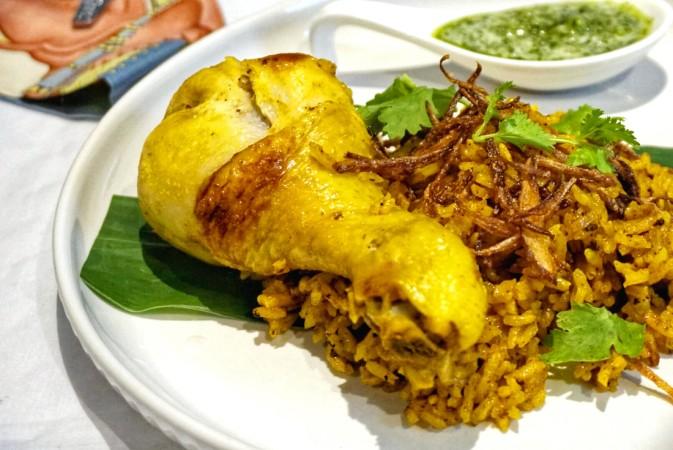
Khao Mok Gai - © Lion Brand Authentic Thai Rice
Festivals & Local Celebrations
Phang Nga's festivals and local celebrations offer a vibrant glimpse into the region's cultural tapestry. These events are deeply rooted in tradition and provide visitors with an opportunity to engage with the local community.
Phang Nga Festival
Held every December, the Phang Nga Festival is a major cultural event that showcases the province's heritage. The festival features traditional dance performances, local music, and a variety of stalls selling regional crafts and foods. Highlights include parades and exhibitions that celebrate Phang Nga’s history and artistic traditions. It's a lively event where locals and visitors come together to enjoy music, dance, and culinary delights.
Songkran Festival (Thai New Year)
Songkran, Thailand's New Year holiday held in April, is famous for its fun water battles. In Phang Nga, the festival combines traditional rituals with fun water splashing. Locals and visitors alike gather on the streets, equipped with water pistols and buckets, to participate in playful water fights. The festival also includes religious ceremonies, such as visiting temples to make merit and pour water over Buddha statues as a symbol of purification and renewal.
Chak Phra Festival
This yearly celebration, celebrated in October, honors the Buddhist practice of "Chak Phra," or the rotation of Buddha's footsteps. The festival features processions with elaborately decorated floats carrying statues of Buddha. These floats parade through the streets, accompanied by traditional music and dance performances. The Chak Phra Festival is an important cultural event that reflects the deep spiritual heritage of Phang Nga.
Ngan Pho Phong Festival
This festival, celebrated in March, honors Phor Phong, a revered local deity. Religious services, local entertainment, and traditional dancing are all featured at the occasion. It's an opportunity for the community to pay respect to their ancestors and seek blessings for the year ahead. The festival is marked by lively celebrations and offers visitors a chance to witness local religious practices and cultural expressions.

Chak Phra Festival - © Thailand NOW
What to Do in Phang Nga
Phang Nga offers a diverse range of activities to suit various interests, from outdoor adventures to cultural explorations. These activities offer a blend of adventure, relaxation, and cultural enrichment, making Phang Nga a versatile destination for all types of travelers.
- Island Hopping: Explore the stunning islands surrounding Phang Nga, such as Koh Phi Phi and Koh Panyee. Each island offers unique landscapes, from pristine beaches to hidden lagoons, making island-hopping an exciting way to experience the region’s natural beauty.
- Kayaking: Paddle through the serene waters of Phang Nga Bay and discover hidden caves and lagoons. Kayaking provides an intimate way to explore the bay’s impressive limestone formations and lush mangrove forests.
- Cave Exploration: Venture into Phang Nga’s intriguing caves, such as Tham Lot and Tham Suwan Khuha. These caves reveal fascinating rock formations and ancient stalactites and stalagmites, providing an adventurous and educational experience.
- Thai Cooking Classes: Learn the art of Thai cooking by joining a local cooking class. This hands-on activity allows you to prepare traditional dishes using fresh ingredients, and you’ll gain valuable culinary skills to take home.
- Beach Relaxation: Spend a day relaxing on Phang Nga’s beautiful beaches, such as Ao Phang Nga National Park’s beaches or the secluded shores of Koh Yao Islands. The calm setting is ideal for relaxing and soaking up the sun.
Shopping in Phang Nga
Phang Nga provides a variety of shopping experiences that cater to different tastes and interests. Shopping in Phang Nga offers a blend of local culture and unique finds, providing visitors with opportunities to bring home a piece of Thailand’s charm.
- Local Markets: Visit local markets like Phang Nga Town Market to explore a range of products, from fresh produce to handmade crafts. These markets offer a genuine glimpse into daily life and the opportunity to pick up unique souvenirs.
- Night Markets: The Phang Nga Night Market is a bustling spot where you can find a mix of street food, local crafts, and clothing. The vibrant atmosphere and diverse offerings make it a great place to experience local culture and shop for keepsakes.
- Craft Shops: For handmade and artisanal products, check out local craft shops in Phang Nga. These shops often feature traditional Thai crafts, such as woven textiles, pottery, and wood carvings, reflecting the region’s artistic heritage.
- Souvenir Stores: There are various souvenir stores throughout Phang Nga where you can buy traditional Thai items like silk scarves, jewelry, and decorative objects. These are excellent presents and souvenirs from your vacation.
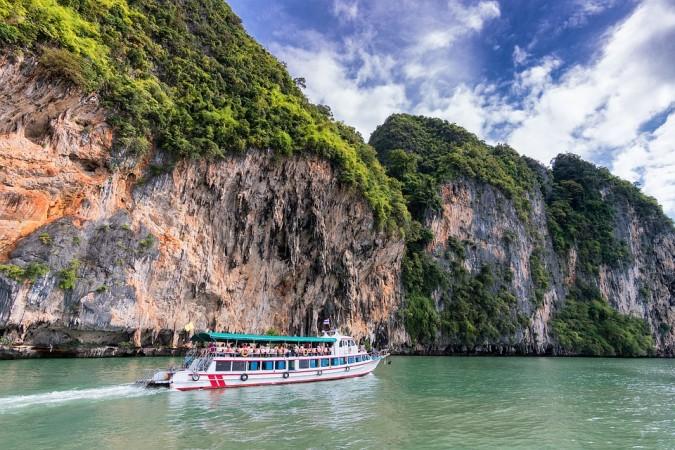
Island Hopping tours around Phang Nga - © qimono
Weather in Phang Nga: Best Time to Visit
Phang Nga has a tropical climate marked by high temperatures and distinct rainy and dry seasons. Understanding weather trends can help you plan your trip to provide the best possible experience.
Dry Season in Phang Nga
This is the peak tourist season in Phang Nga, offering sunny days and minimal rainfall. Temperatures typically range from 25°C to 33°C (77°F to 91°F), making it ideal for outdoor activities like island hopping, kayaking, and beach relaxation. The dry season is perfect for exploring the natural beauty of Phang Nga Bay and the Similan Islands.
Wet Season in Phang Nga
The wet season brings higher humidity and frequent rainfall, with temperatures ranging between 24°C and 32°C (75°F to 90°F). Rain showers are often brief but intense, with occasional heavy downpours. While this period sees fewer tourists, it offers lush landscapes and a quieter atmosphere. It’s a great time for those who enjoy a more serene environment and don’t mind the occasional rain.
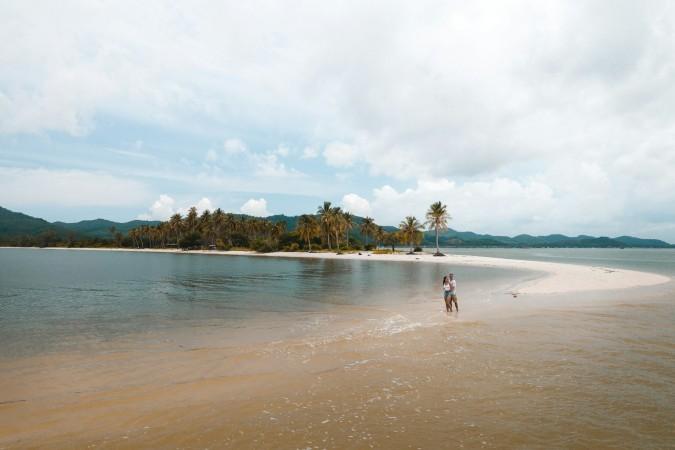
A quite day at Koh Yao Yai, Phang Nga - © Marc Mintel
Essential Travel Information
Getting Around Phang Nga
- Car Rentals: Renting a car is a convenient way to explore Phang Nga at your own pace. Several car rental agencies offer vehicles for hire, allowing you to travel between attractions and enjoy the scenic drive through the province.
- Motorbike Rentals: For a more adventurous option, renting a motorbike is popular among travelers. It provides flexibility and is ideal for navigating smaller roads and exploring remote areas.
- Taxis and Tuk-Tuks: Taxis and tuk-tuks are readily available in Phang Nga Town and surrounding areas. They offer a hassle-free way to get around, though it’s advisable to agree on a fare before starting your journey.
- Local Buses: Public buses connect Phang Nga with major cities and nearby regions. They are an economical choice for longer distances, though schedules and routes may vary.
- Boat Services: To explore islands and coastal areas, boat services are essential. Local operators offer boat tours and transfers to popular islands like Koh Yao and Phang Nga Bay.
ATM & Banking Services
In Phang Nga, accessing banking services and ATMs is convenient, with numerous options available throughout the region. ATMs can be found in major towns and tourist areas, allowing for easy cash withdrawals using international credit and debit cards. Banks offer a range of financial services, including currency exchange and cash withdrawals. Credit cards are widely accepted in most hotels, restaurants, and larger shops, but it’s a good idea to carry some cash for smaller establishments that may not accept cards.
Where to Stay in Phang Nga
- Luxury Resorts: For a lavish experience, Phang Nga features high-end resorts that provide stunning views, upscale amenities, and exceptional service. These resorts offer a combination of luxurious comfort, fine dining, and top-notch facilities, making them ideal for those seeking a premium stay.
- Mid-Range Hotels: Numerous mid-range hotels are available, offering a balance of comfort and value. These hotels provide well-appointed rooms and convenient amenities at a reasonable price, making them a popular choice for travelers looking for quality accommodation without breaking the bank.
- Beachfront Bungalows: For a unique and serene experience, consider staying in beachfront bungalows or villas. These accommodations provide direct access to the beach and a tranquil environment, perfect for those who want to relax and enjoy the natural beauty of Phang Nga.
- Homestays: For a more authentic experience, homestays offer the chance to live with local families. These accommodations provide a unique opportunity to experience daily life in Phang Nga, enjoy home-cooked meals, and gain deeper insights into local customs and traditions.
Des articles pour vous

Voyage à Kampong Cham - Cambodge, Asie
Kampong Cham est une charmante ville riveraine située le long du fleuve Mékong. Connue pour son importance historique et ses attractions culturelles, Kampong Cham offre un mélange d'architecture coloniale, de temples anciens et de paysages pittoresques. Kampong Cham est reliée au district voisin de Tbong Khmum par le pont Kizuna, le premier pont au Cambodge à traverser le fleuve Mékong, en faisant un carrefour de transport crucial pour la région.
Population : Estimation de 80 000 habitants (en 2024)
Économie : Bien que n'étant pas encore une destination touristique majeure, Kampong Cham propose des sites culturels et historiques, tels que le temple Wat Nokor et le pont en bambou de Koh Pen, ainsi que des attractions naturelles comme des forêts et des chutes d'eau. Le gouvernement se concentre sur le développement du tourisme pour améliorer l'économie locale.
Points d'intérêt : Wat Nokor Bachey, Phnom Han Chey, Phnom Pros et Phnom Srey, pont en bambou de Koh Pen, Wat Joy T'maw, Preah Theat Teuk Chha, piste d'atterrissage abandonnée de l'US.

Explorez Nha Trang - Voyage au centre du Vietnam, Asie
Nichée le long de la magnifique côte du Vietnam, Nha Trang se distingue comme une destination de premier choix pour les voyageurs. Cette ville côtière, réputée pour ses superbes plages et sa vie marine foisonnante, s'adresse à tous. Nha Trang vous accueille à bras ouverts, que vous recherchiez des aventures, de la culture ou de la détente au bord de la mer. Ce guide vous fera découvrir les points forts de cet endroit magnifique, facilitant ainsi la planification de votre voyage de manière fluide et excitante.
Population : Environ 423 000 habitants en 2019.
Économie : L'un des principaux centres touristiques du Vietnam et la plus grande économie de la province de Khanh Hoa.
Sites emblématiques : Célèbre pour les tours Cham de Po Nagar, la cathédrale de Nha Trang et l'île Hon Mun.

Voyage à Sihanoukville - Cambodge, Asie
Sihanoukville, une ville côtière du sud-ouest du Cambodge, est la capitale de la province de Preah Sihanouk. Située sur une péninsule le long du golfe de Thaïlande, la ville est bien reliée à Phnom Penh par des autoroutes principales et dispose d'un aéroport international.
La ville abrite le seul port en eau profonde du Cambodge, jouant un rôle crucial dans la logistique et le commerce du pays. Les plages magnifiques de Sihanoukville, telles qu'Ochheuteal et Serendipity, attirent aussi bien les touristes nationaux qu'internationaux. Le développement économique a prospéré ces dernières années, en particulier grâce à la création de la Zone économique spéciale de Sihanoukville (SSEZ) et aux investissements chinois dans les casinos, l'immobilier et les stations balnéaires. La ville offre également des attractions naturelles telles que le parc national de Ream et plusieurs îles voisines, en faisant une destination variée pour les voyageurs d'affaires et de loisirs.
Population : La population de Sihanoukville était d'environ 160 000 habitants en 2024.
Économie : Sihanoukville, une ville côtière en pleine croissance au Cambodge, se distingue par son mélange dynamique de développement économique et de tourisme. La Zone économique spéciale de Sihanoukville (SSEZ) est devenue un pôle industriel majeur, abritant plus de 180 entreprises et créant des milliers d'emplois. Avec le seul port en eau profonde du Cambodge, la ville joue un rôle clé dans le commerce et la logistique du pays. Bien qu'elle se soit transformée d'une petite ville balnéaire tranquille en un centre urbain animé, Sihanoukville reste célèbre pour ses plages immaculées, attirant des touristes tout au long de l'année. Les investissements chinois importants ont alimenté la croissance des hôtels, des casinos et de l'immobilier, faisant de la ville un centre d'opportunités économiques et d'hospitalité.
Monuments : Plage d'Otres, Plage d'Ochheuteal, Plage de l'Indépendance, Parc national de Ream, Chute d'eau de Kbal Chhay, Monument des Lions d'Or, Wat Leu.

Explorez Kharkhorin - Voyage en Mongolie, Asie
Bienvenue à Kharkhorin, un trésor historique niché au cœur de la Mongolie. Ancienne capitale vibrante de l'Empire Mongol sous le légendaire Gengis Khan, Kharkhorin se dresse comme un témoignage de la riche culture et de l'histoire de la Mongolie. Cette ville antique possède une combinaison unique d'importance historique et de paysages époustouflants, en faisant une destination incontournable pour un voyage de rêve en Mongolie. En mettant le pied à Kharkhorin, vous ferez un saut dans le temps, à une époque de grands palais, de routes commerciales prospères et d'échanges culturels sans pareils. Que vous soyez intrigué par les ruines anciennes, désireux d'explorer les traditions locales ou simplement en quête d'une immersion dans la beauté naturelle de la Mongolie, Kharkhorin a quelque chose à offrir à chacun.
Population : Environ 1 000 habitants en 2020.
Économie : L'une des attractions touristiques les plus importantes de la Mongolie et l'ancienne capitale de l'Empire Mongol.
Monuments : Célèbre pour les Ruines de Kharkhorin, le Monastère d'Erdene Zuu, et la Vallée d'Orkhon, un site du patrimoine mondial de l'UNESCO.

Explore Luang Prabang - Laos Travel, Asia
Luang Prabang, nestled in northern Laos at the meeting point of the Mekong river and Nam Khan river, is a city celebrated for its rich cultural heritage and stunning natural beauty. Recognized as a UNESCO World Heritage Site in 1995, it boasts a unique blend of traditional Lao and French architecture that has been carefully preserved. Whether you're wandering through its ancient temples, admiring the local architecture, or soaking in the natural beauty of waterfalls and rivers, Luang Prabang offers something for everyone.
Population: Approximately 470,000 in 2020.
Economy: Luang Prabang's economy thrives on tourism, with its UNESCO status drawing visitors to its temples, natural wonders, and cultural experiences. Local crafts, hospitality, and small businesses also play vital roles, supporting the town's sustainable growth. Local crafts, hospitality, and small businesses also play vital roles, supporting the town's sustainable growth.
Landmarks: Famous for the Wat Xieng Thong, Royal Palace Museum (also known as Haw Kham), and Mount Phousi (Phou Si Hill).Luang Prabang, nestled in northern Laos at the meeting point of the Mekong river and Nam Khan river, is a city celebrated for its rich cultural heritage and stunning natural beauty. Recognized as a UNESCO World Heritage Site in 1995, it boasts a unique blend of traditional Lao and French architecture that has been carefully preserved. Whether you're wandering through its ancient temples, admiring the local architecture, or soaking in the natural beauty of waterfalls and rivers, Luang Prabang offers something for everyone.
Population: Approximately 470,000 in 2020.
Economy: Luang Prabang's economy thrives on tourism, with its UNESCO status drawing visitors to its temples, natural wonders, and cultural experiences. Local crafts, hospitality, and small businesses also play vital roles, supporting the town's sustainable growth. Local crafts, hospitality, and small businesses also play vital roles, supporting the town's sustainable growth.
Landmarks: Famous for the Wat Xieng Thong, Royal Palace Museum (also known as Haw Kham), and Mount Phousi (Phou Si Hill).

Explore Vientiane - Laos Travel, Asia
Vientiane, the capital of Laos, offers a unique travel experience for those looking to explore a peaceful Southeast Asian city with a deep connection to its cultural roots. Unlike other bustling capitals, Vientiane boasts a serene and laid-back atmosphere, making it a perfect destination for travelers wanting to escape the chaos of more crowded cities. This charming city sits along the Mekong River, offering scenic views, rich history, and a vibrant yet tranquil way of life. As a gateway to exploring Laos, this capital invites you to slow down, immerse in its heritage, and enjoy the local flavors.
Population: Approximately 840,000 in 2023.
Economy: Vientiane's economy is growing steadily, driven by government services, trade, and tourism. Key sectors include agriculture, manufacturing, and construction. The city's strategic location along the Mekong River supports trade with neighboring Thailand and Vietnam.
Landmarks: Famous for the Pha That Luang, Patuxai, and the Buddha Park (or Wat Xieng Khuan).
